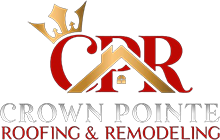Maintaining the integrity of your home’s roof is essential to protecting your investment and ensuring the safety of your loved ones. While the significance of routine roofing inspections may escape the notice of many homeowners, gaining insight into the workings of these inspections can unveil potential issues that might be silently looming overhead.
From pre-inspection preparation to the meticulous examination process, a professional roofing inspection unveils a wealth of information about the condition of your roof. In this discussion, we will explore the step-by-step process of a home roofing inspection, identify common roofing issues, and highlight the benefits of entrusting this task to experienced professionals. So, let’s embark on this journey together and discover the inner workings of a home roofing inspection.
Importance of Regular Inspections
Regular inspections of your home’s roof are of utmost importance for ensuring its longevity, preventing costly repairs, and maintaining the overall structural integrity of your property. Roofing maintenance plays a critical role in extending the lifespan of your roof and minimizing the risk of damage. Regular inspections allow you to identify potential issues early on and address them before they worsen. This proactive approach can save you significant time and money in the long run. During an inspection, a professional roofing team will thoroughly examine the roof for any signs of damage, such as loose or missing shingles, leaks, or deteriorating flashing. They will also inspect the gutters, downspouts, and ventilation system to ensure proper functionality. By investing in regular inspections, you can effectively maintain the condition of your roof, prolong its lifespan, and protect your property from avoidable damages.
Pre-Inspection Preparation
Proper preparation is essential for homeowners and professional contractors to ensure a thorough and effective roofing inspection. Before conducting a roof inspection, it is essential to have a roofing checklist in place to ensure all necessary areas are examined. This checklist should include checking for any signs of damage or wear, inspecting the gutters and downspouts for debris or blockages, and assessing the condition of the flashing and seals. Additionally, it is crucial to perform regular roof maintenance, including cleaning the roof surface, trimming overhanging branches, and removing any moss or algae growth. By adequately preparing for a roof inspection and following a comprehensive checklist, homeowners and professional contractors can ensure that potential issues are identified and addressed promptly, helping to extend the roof’s lifespan and prevent costly repairs in the future.
Roofing Inspection Process
Throughout the roofing inspection procedure, skilled roofing contractors thoroughly scrutinize different aspects of the roof to evaluate its condition and pinpoint any potential issues or areas of concern. They follow a detailed roofing inspection checklist to ensure that every aspect of the roof is noticed. This checklist involves scrutinizing the shingles for indications of damage like cracks, curling, or missing pieces. Contractors also carefully inspect the flashing around vents, chimneys, and skylights to confirm its proper sealing and integrity. Furthermore, they look for any signs of roof leaks, such as water stains on ceilings or walls, and assess the gutters and downspouts for potential clogs or damage. By comprehensively evaluating these elements, contractors can gauge the roof’s overall health and recommend necessary repairs or maintenance.
Identifying Common Roofing Issues
Professional contractors can identify Common roofing issues by meticulously examining various roof components. These experts have a keen eye for detail and are trained to spot even the smallest signs of roof damage. Here are some common roofing issues that can be detected during an inspection:
– Shingle damage:
- Missing shingles
- Curling or buckling shingles
- Cracked or blistered shingles
– Leaks and moisture problems:
- Water stains on ceilings or walls
- Damp or moldy attic insulation
- Water pooling on the roof
Benefits of Professional Roof Inspections
Professional roof inspections assure homeowners of a thorough and comprehensive assessment, revealing potential issues that may take time to be apparent to the untrained eye. While some homeowners may opt for DIY inspection techniques to save on the cost of inspections, there are distinct advantages to hiring a professional. While certain homeowners may choose DIY inspection methods to cut down on inspection costs, there are clear benefits to engaging a professional. Firstly, professionals possess the requisite expertise and experience to discern even the subtlest signs of damage or wear that may escalate into more substantial problems in the future. They are trained to assess the roof’s overall condition, including its structure, materials, and drainage systems. Additionally, professional inspections often come with warranties or guarantees, providing homeowners peace of mind. Ultimately, investing in a professional roof inspection can save homeowners money in the long run by catching potential issues early and preventing costly repairs or replacements.
Discover the range of services we offer at 10999 Reed Hartman Hwy, Suite 107, Blue Ash, OH 45242.
Call us at (513) 791-1053 to get started.







